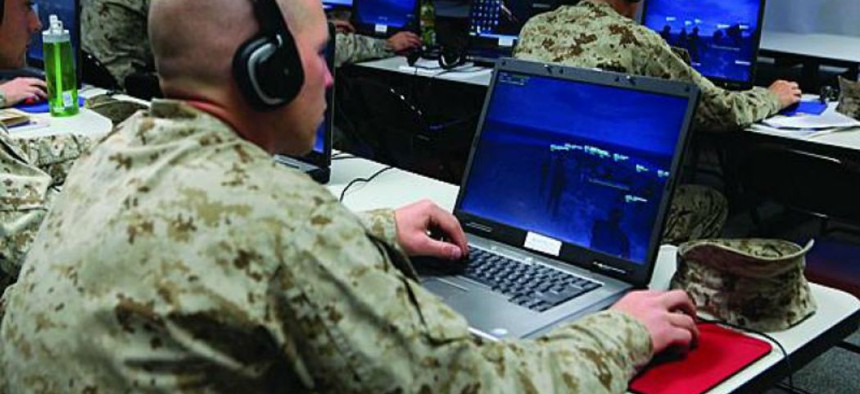The Navy’s plan to re-compete its Next-Generation Enterprise Network (NGEN) contract is helping pave theway toward conceptual work on combining domestic and international IT networks, officials explained.
“Dialogue is ongoing in terms of what we need to do,” Capt. Michael Abreu, program manager for the Naval Enterprise Networks program office, told reporters.
Current Continental United States, or CONUS, domestic data systems are separated from overseas datasystems closer to a shore-based operational environment. The Navy Marine Corps Intranet, or NMCI and the OCONUS Navy Enterprise Network (ONE-NET) willtransform from separate environments to a globally integrated network, a Navy statement said.
The integration of NMCI and ONE-Net will bring standardization of network command-and-control and the waynetwork services are delivered globally to Navy shore locations, service officials explained. “We believe we can expand to OCONUS to be able to improve the services and standardize the services. Thisrequires a lot of engagement with OCONUS commanders. We will drive increased speed, capability andsecurity with less cost over time and get more user bandwidth,” said Abreu.
Describing current efforts to accelerate modernization of the NMCI, Abreu indicated that the Next-GenerationEnterprise Network—Re-compete, or NGEN-R, will position the network for faster integration of networks andimplementation of new technologies. Looking at both the near and far term, anticipated Navy NGEN contracts will help foster faster-developing,more interoperable IT systems across the globe.
The concept is to create a uniform global service deliverymodel. Abreu emphasized the merging CONUS and OCONUS environments, which are now managed separately, willbe facilitated in part through the NGEN-R acquisition process.
While the integration of IT networks for more than 700,000 CONUS users with more than 33,000 OCONUS users brings substantive advantages such as greater interoperability and faster access to relevant data, Abreu explained that the Navy is quite circumspect in its approach to ensure protection of operational networks.
“When we are close to the operational warfighter, we have to be careful with how we touch that environment
and have no effect on operations,” he said. Merging the two networks will also include converging two otherwise disparate business models as a way toimprove support to operational commanders in OCONUS environments.
“We want to standardize our approach from a security command and control perspective for our networkdefenders and drive cost efficiencies into these programs,” Abreu added. Faster-moving IT design teams allow for concurrent design efforts able to greatly reduce developmental time bymore than 50-percent, Abreu explained.





